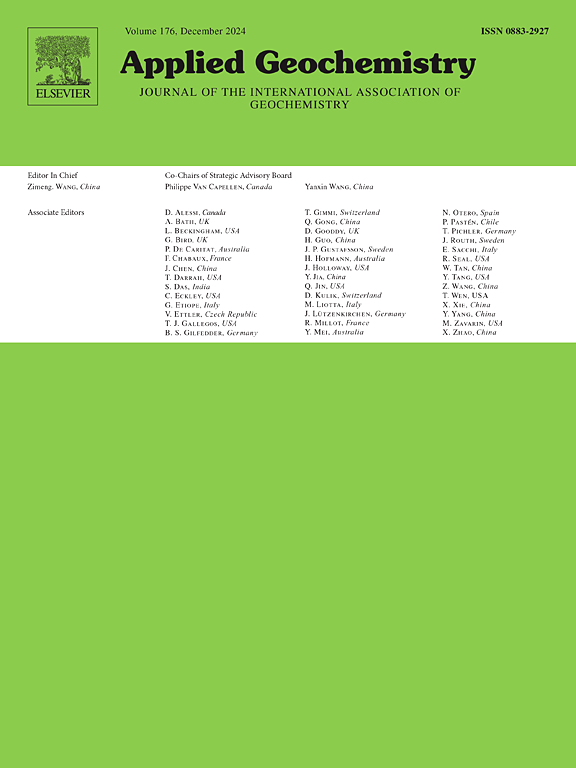Distribution and evaporation characteristics of Rb and Cs in complex salt brine systems
IF 3.1
3区 地球科学
Q1 GEOCHEMISTRY & GEOPHYSICS
引用次数: 0
Abstract
The brine in salt lakes is rich in resources, including not only K, Mg, and B, but also valuable trace elements. During the enrichment and extraction of trace elements (Rb, Cs) from carbonate type salt lake brines, the process is significantly influenced by the presence of other coexisting ions such as Li+, K+, and Mg2+.The physical and chemical properties of K+ are extremely similar to those of Rb+ and Cs+, and its impact on the extraction of Rb+ and Cs+ is particularly significant. When K+, Rb+, and Cs+ coexist, they can form solid solutions such as [(K, Rb)2SO4], [(K, Cs)2SO4], and [(Rb, Cs)2SO4]. The formation of these solid solutions can lead to severe losses of Rb and Cs during the evaporation process of the brine, resulting in low yield. In response to the aforementioned issues regarding the evaporation process of Rb and Cs, this paper uses the aqueous-salt system phase diagram as a guide and combines experimental research with simulation calculations to study the enrichment patterns of trace elements Rb and Cs in the Na+, K+//Cl−, CO32−, SO42--H2O aqueous-salt system, as well as the migration mechanism of Rb and Cs.

求助全文
约1分钟内获得全文
求助全文
来源期刊

Applied Geochemistry
地学-地球化学与地球物理
CiteScore
6.10
自引率
8.80%
发文量
272
审稿时长
65 days
期刊介绍:
Applied Geochemistry is an international journal devoted to publication of original research papers, rapid research communications and selected review papers in geochemistry and urban geochemistry which have some practical application to an aspect of human endeavour, such as the preservation of the environment, health, waste disposal and the search for resources. Papers on applications of inorganic, organic and isotope geochemistry and geochemical processes are therefore welcome provided they meet the main criterion. Spatial and temporal monitoring case studies are only of interest to our international readership if they present new ideas of broad application.
Topics covered include: (1) Environmental geochemistry (including natural and anthropogenic aspects, and protection and remediation strategies); (2) Hydrogeochemistry (surface and groundwater); (3) Medical (urban) geochemistry; (4) The search for energy resources (in particular unconventional oil and gas or emerging metal resources); (5) Energy exploitation (in particular geothermal energy and CCS); (6) Upgrading of energy and mineral resources where there is a direct geochemical application; and (7) Waste disposal, including nuclear waste disposal.
 求助内容:
求助内容: 应助结果提醒方式:
应助结果提醒方式:


